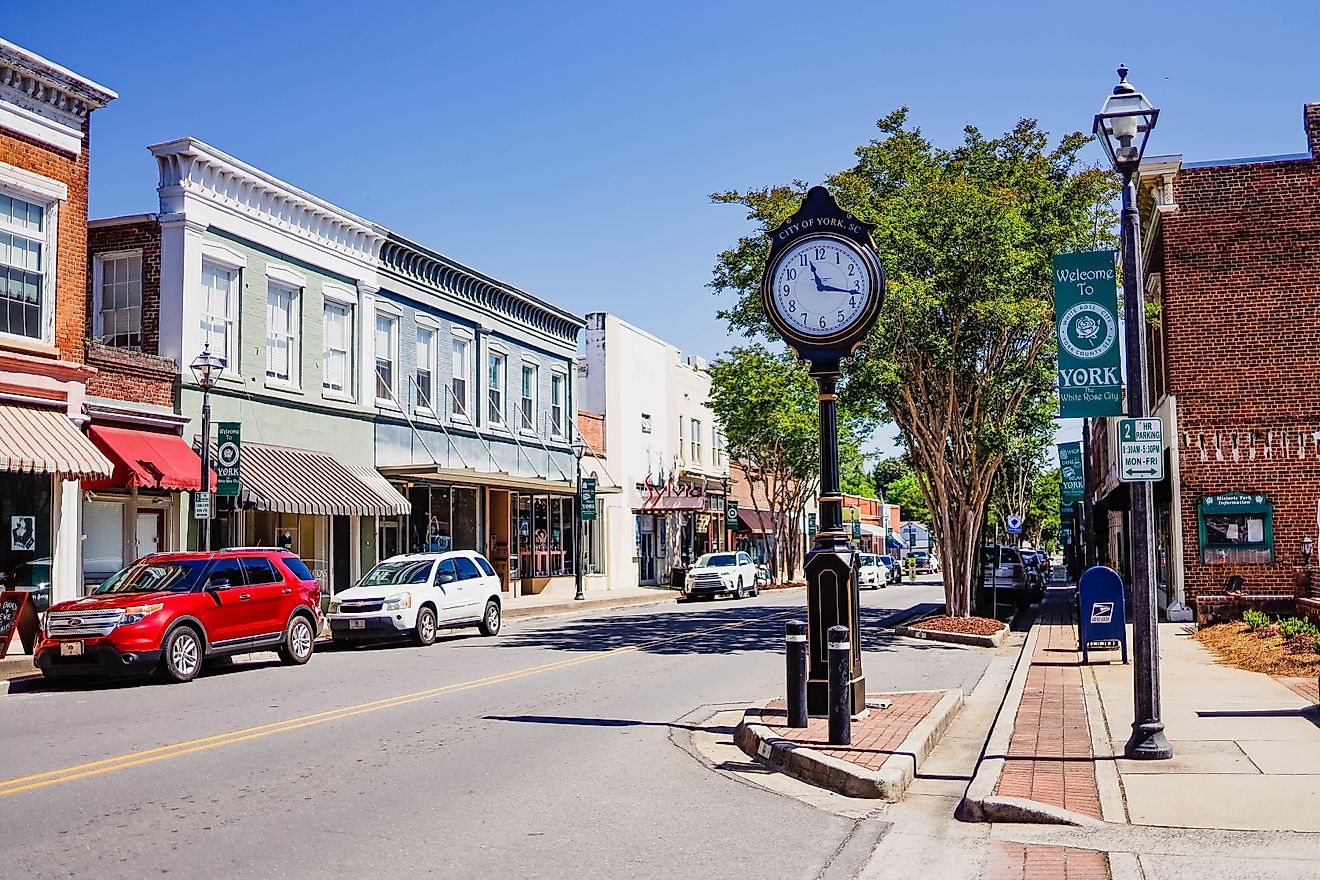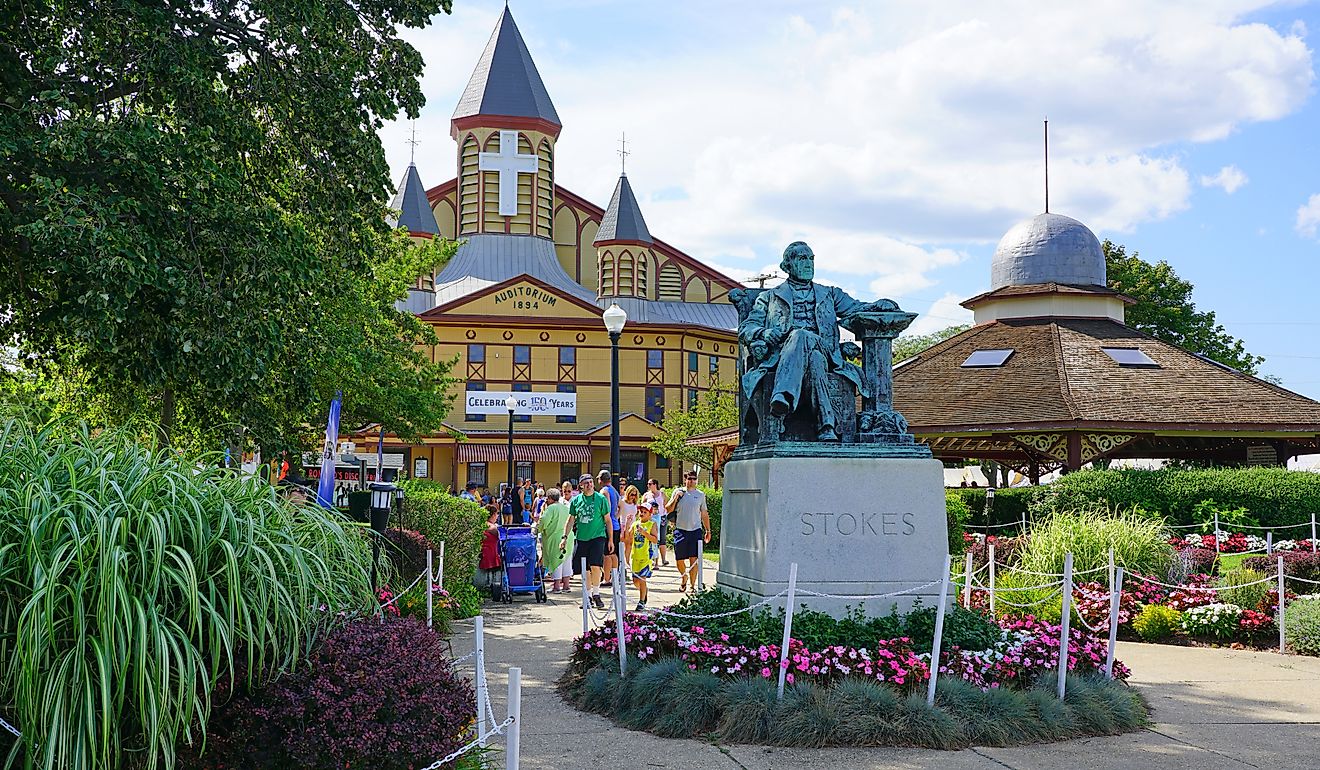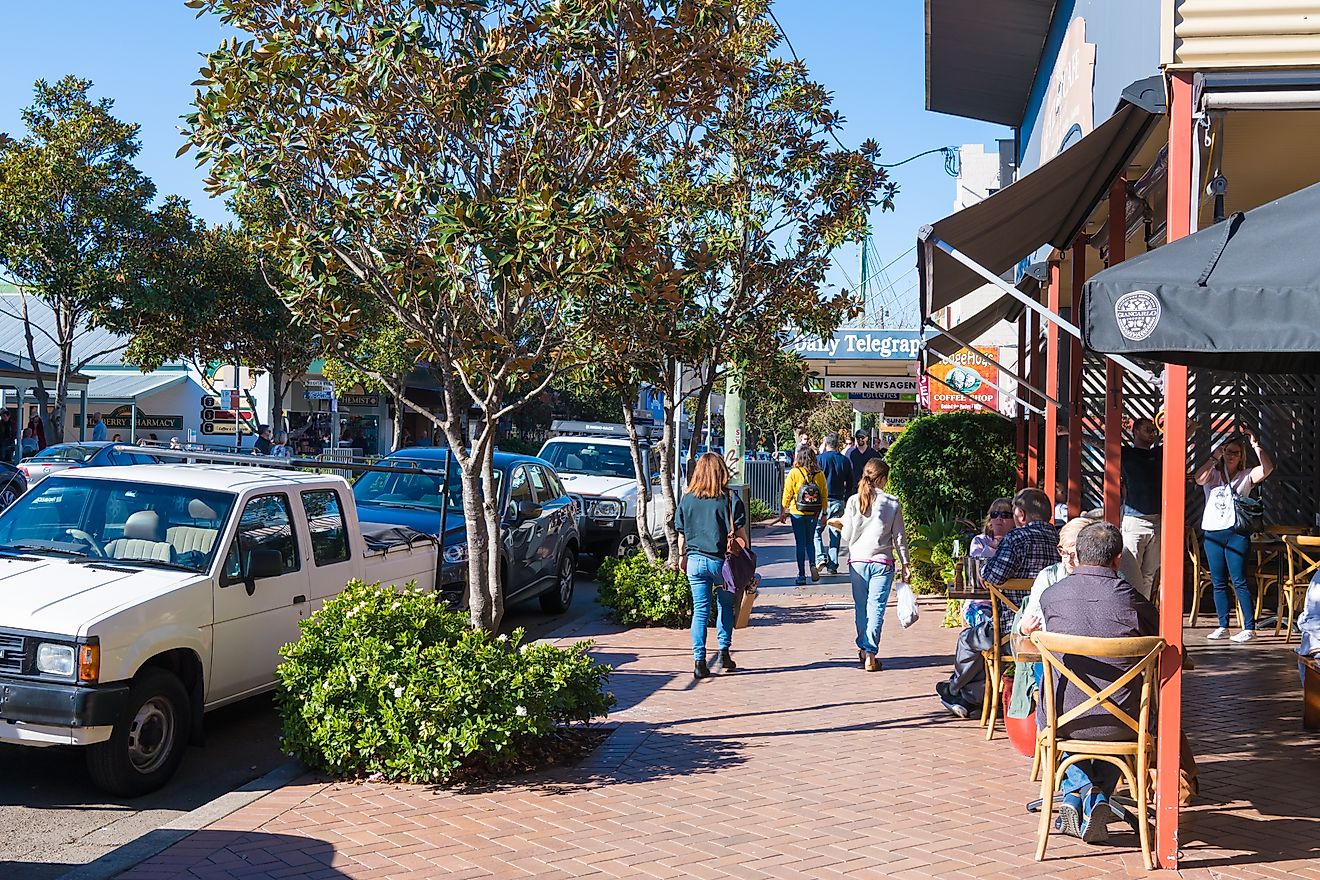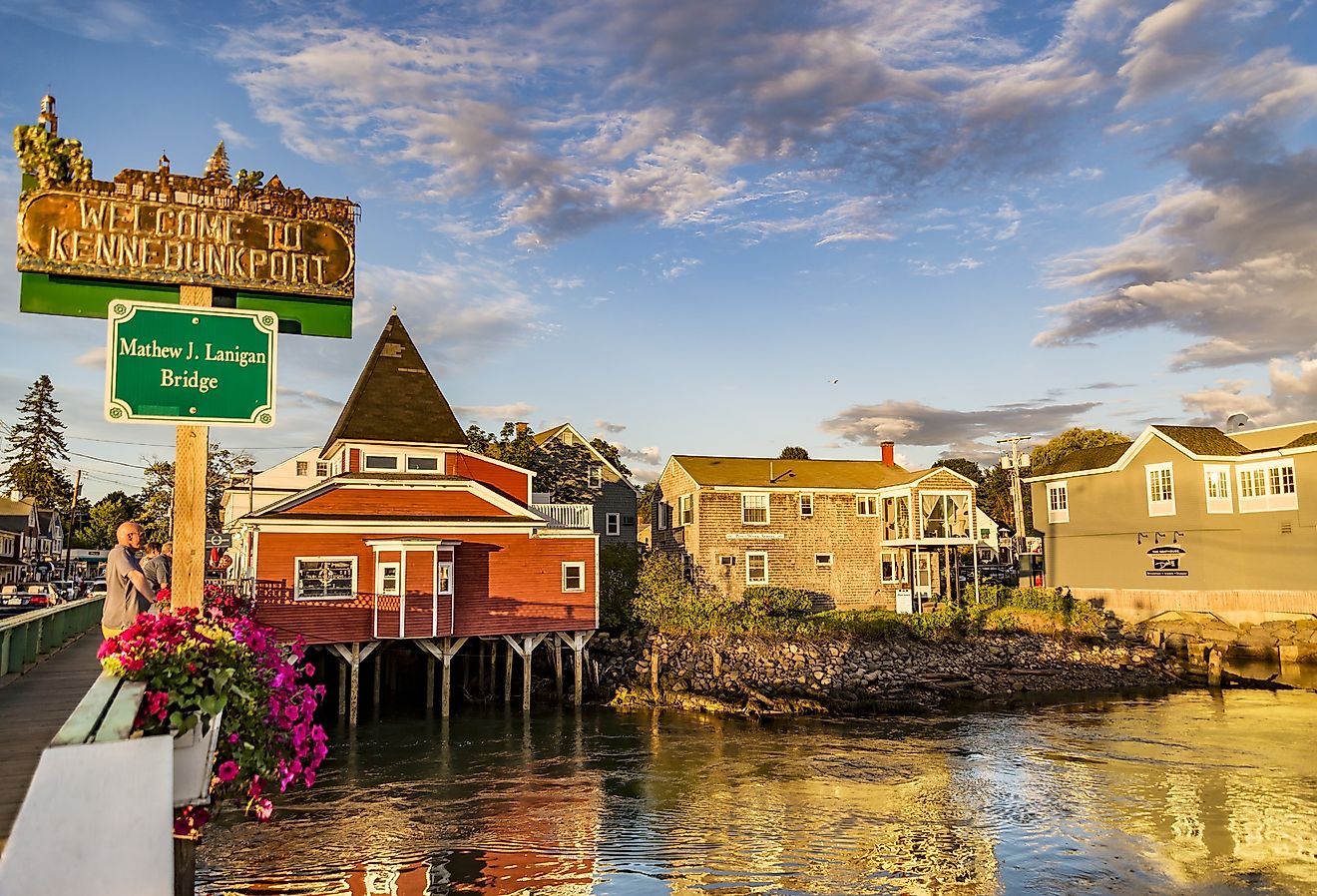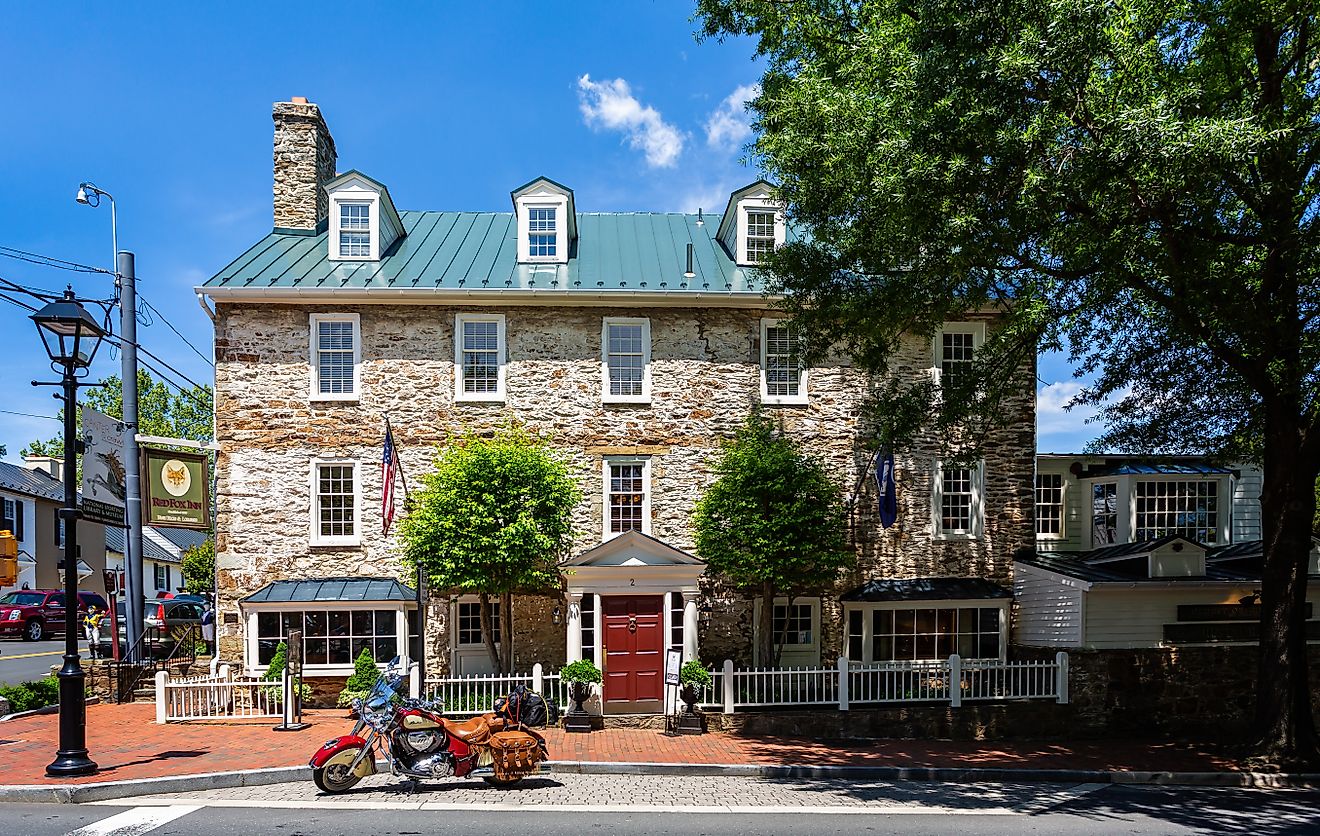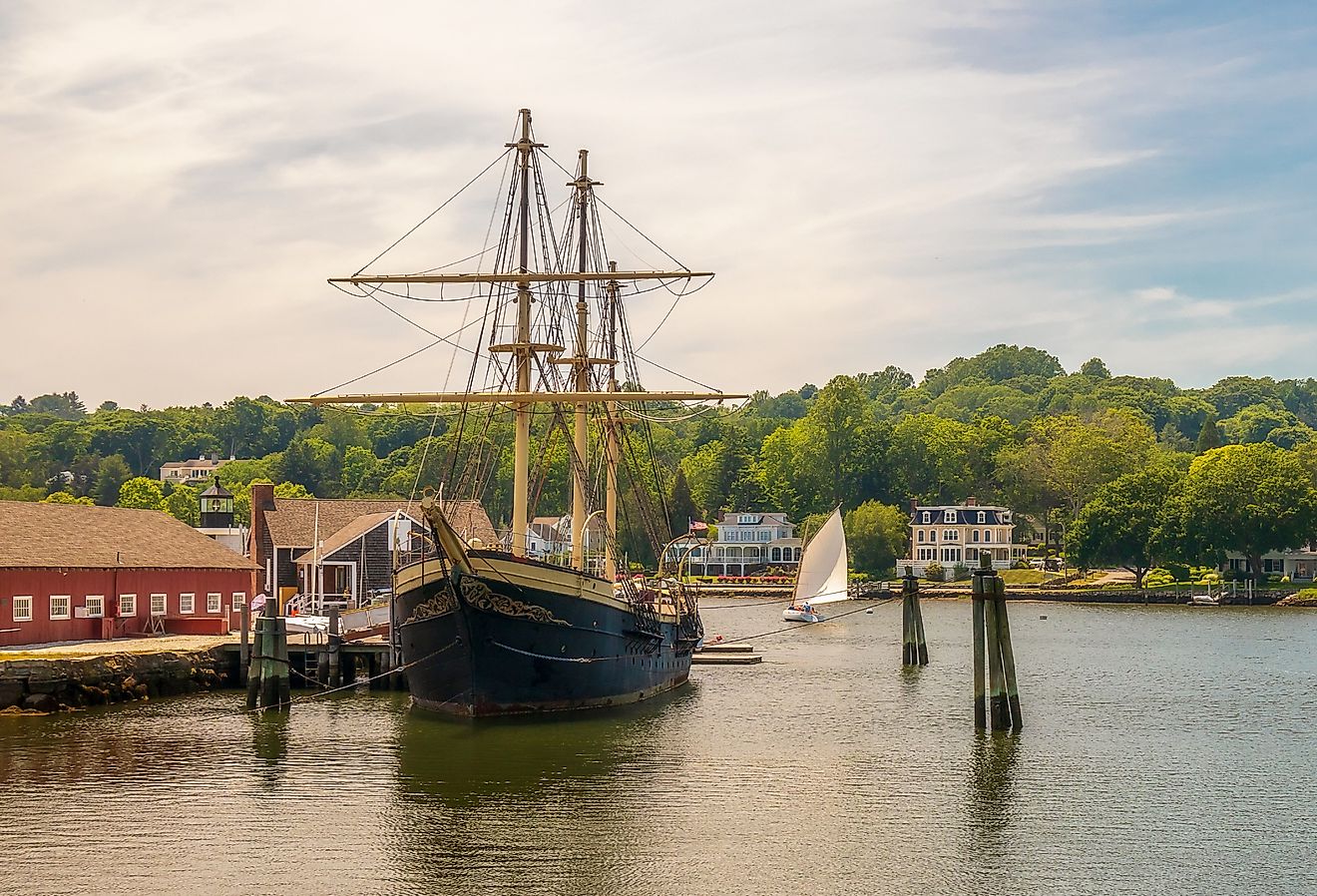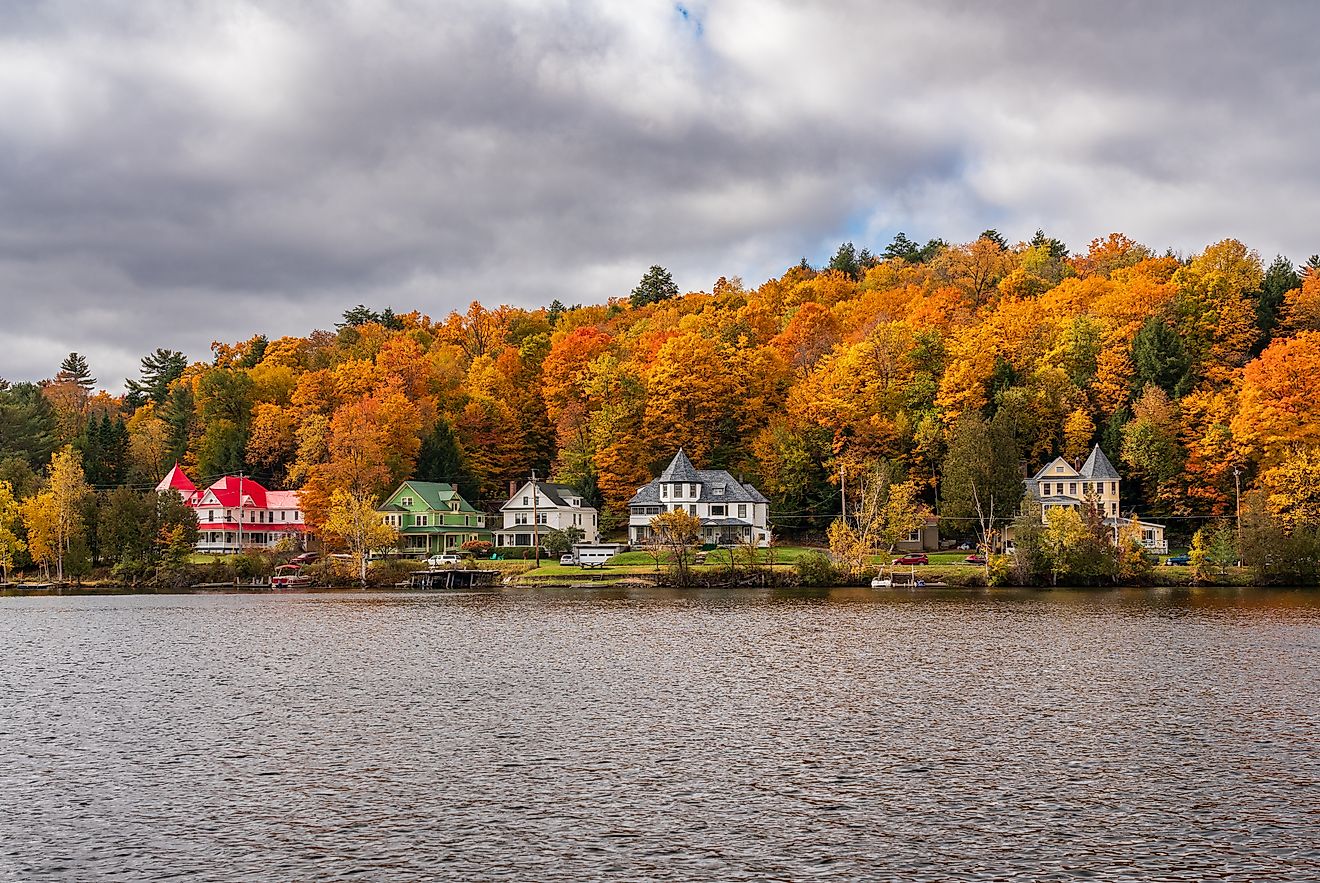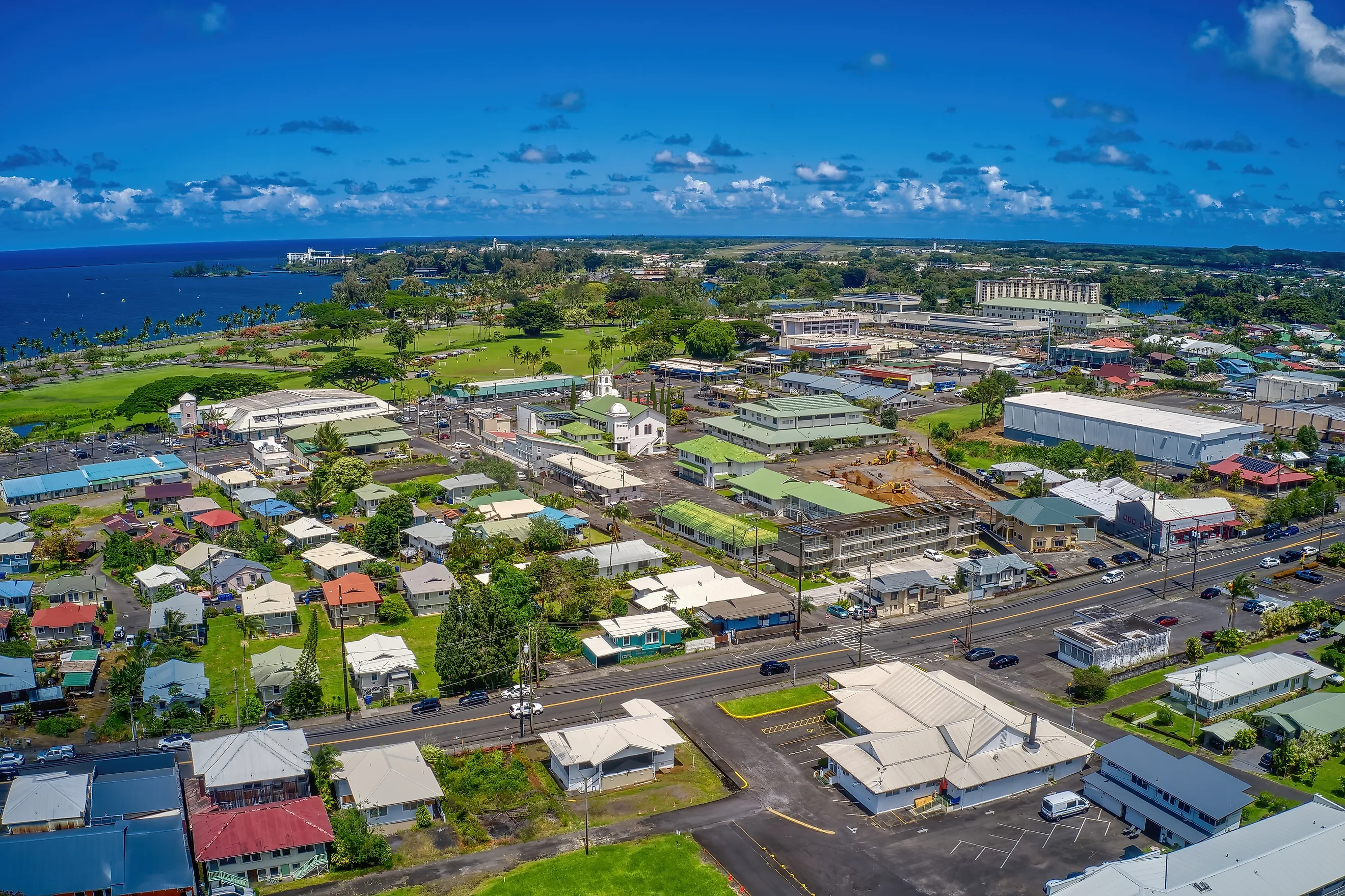
8 Cost-Effective Retirement Towns In Hawaii
Hawaii often evokes images of sunlit beaches and island life, yet the islands also shelter communities where daily rhythms feel manageable, friendly, and affordable. Prospective retirees will find towns that offer morning markets and museum visits, coastal walks and rainforest trails, and local clubs and centers that welcome new residents. A town like Hilo pairs a lively waterfront market with easy access to Hawaiʻi Volcanoes National Park, while Waiʻanae on Oʻahu’s leeward shore offers long beach walks, neighborhood events, and strong community health services. On Molokaʻi, Kaunakakai rewards early risers with pier-side views and small-town social life. Explore all the practical snapshots of each town’s daily life, notable places to see, and local organizations where retirees can connect with neighbors and pursue interests. Pack a light bag, imagine slowing the pace, and consider which island setting, coastline, rainforest, or small-island harbor most appeals to a retirement chapter that blends easy access to services with plentiful opportunities for exploration.
Hilo, Hawaiʻi Island
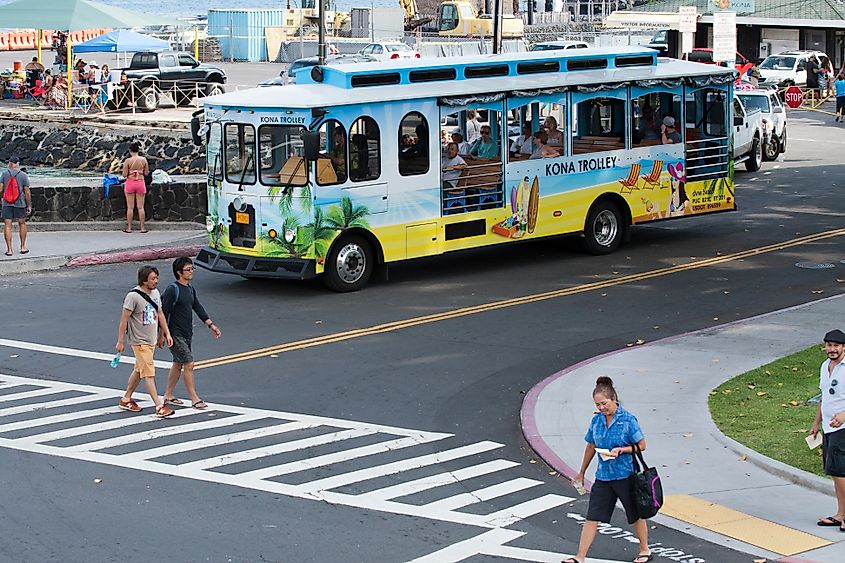
Hilo functions as the Big Island’s cultural and administrative center while keeping a relaxed tempo that appeals to retirees who want services close at hand. Days can begin with a stroll through the Hilo Farmers Market, where local produce and crafts animate the waterfront. Nearby, Wailoa River State Park invites walks on paved paths and quiet bench seats along the river, while the Pacific Tsunami Museum presents the town’s resilient history in a compact, informative setting.
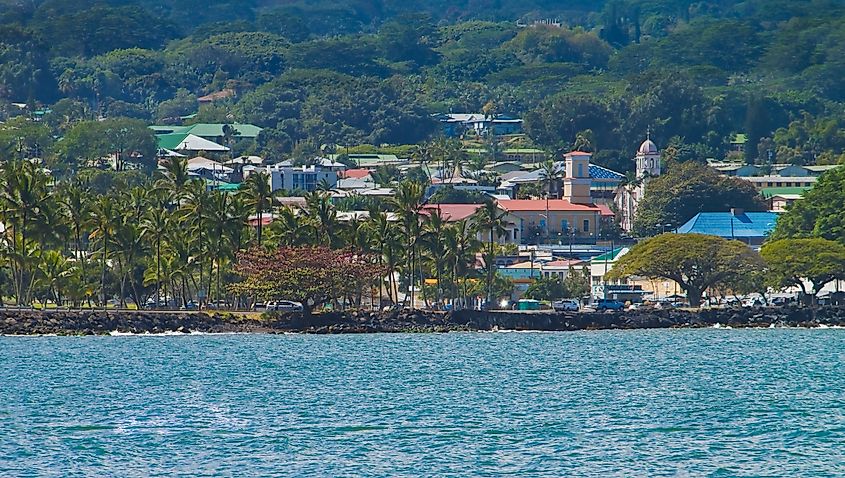
For nature lovers, easy drives deliver the dramatic vistas of Hawaiʻi Volcanoes National Park, where crater overlooks and short interpretive trails can offer rewarding half-day outings. Hilo supports older residents with the Kamana Senior Center, which runs classes, social meals, and wellness programs, and with full hospital services at Hilo Benioff Medical Center, so medical needs are nearby. With a median home price of $552,500, well below the state’s median, Hilo residents can experience a mix of parks, community programming, and accessible medical services, giving retirees options for learning, volunteering, or simply savoring island life.
Kea’au, Hawaiʻi Island

Kea’au median house price is well below the state median at $465,000, with the town sitting on the lower slopes of the island’s eastern flank, and acts as a convenient hub for residents who want affordable housing near Hilo’s amenities. Strolls through local neighborhoods reveal community gardens and small shops where neighbors stop to say hello.
For outings, the Ginger Farm Market & Gardens and nearby botanical stops provide gentle, sensory experiences, while short drives lead to waterfall hikes on the Hamakua Coast. Keaau’s Kea’au Community Center hosts social gatherings, craft workshops, and fitness classes geared to older adults, and nearby one-bedroom independent living options, such as Keaʻau Elderly Housing, offer downsizing choices with community support. Routine medical care and hospital services are available in Hilo, a manageable drive for specialty appointments. Keaau’s quieter pace, combined with active county programming and ready access to both coastal and upland scenery, makes it a practical base for retirees who prefer a less tourist-oriented lifestyle while staying connected to island services.
Pāhoa, Hawaiʻi Island

The Pāhoa district offers an earthy, communal feel where local markets and neighborhood cafés form the social fabric. Visitors and residents will enjoy the off-the-beaten-path attractions of the area, including the Lava Tree State Monument, with its dramatic, hollowed lava pillars. The beach access at Isaac Hale Beach Park, reshaped by the 2018 lava flows, is now open, but features a black sand shoreline and partial restrictions. The town schedule regularly includes community craft fairs and small music nights that highlight local artists.
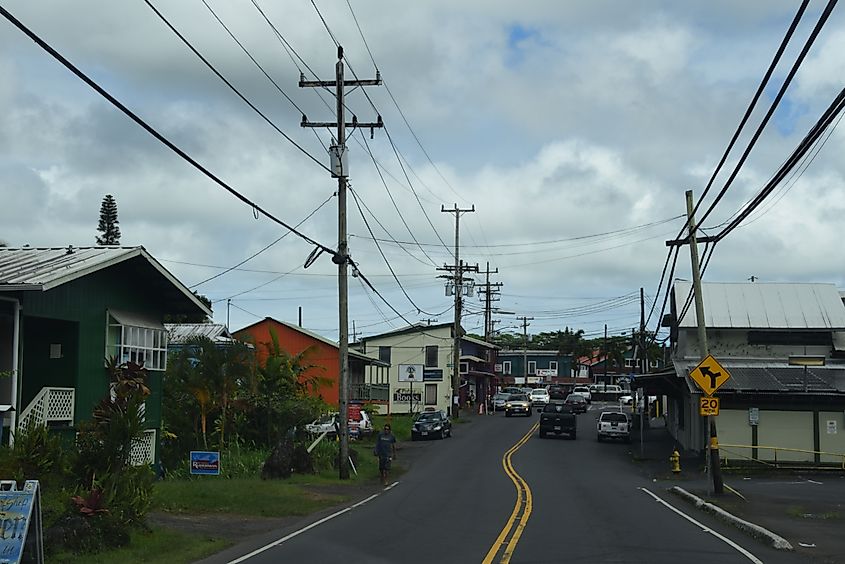
For seniors, the Pāhoa Senior Center provides congregate dining, activities, and transportation support, and county-coordinated services help with nutrition and home supports. Major medical centers are reachable in Hilo for specialty care, while routine clinics in the district handle primary care. For those working with a smaller budget, Pāhoa’s median house price is only $345,000, well below Hawaii’s median. Retirees seeking a strong neighborhood rhythm and many outdoor options — from tidepool exploration to garden volunteering — Pāhoa is an approachable and less costly alternative to the island’s resort corridors.
Hawaiian Ocean View (Ocean View), Hawaiʻi Island

A shopping center in Ocean View, Hawaii. By Yoshi Canopus, CC BY-SA 4.0, Wikimedia Commons
Known as ‘the world’s largest subdivision’, the Hawaiian Ocean View community is a large, mostly residential area on the island’s leeward slopes that attracts retirees who prioritize affordability, the median home price is $285,000, and solitude. Ocean View offers proximity to the lesser-known Hawaii Volcano National Park’s Kahuku Unit, comprising roughly one-third of the national park lands on the island of Ka’u. Residents can seize the opportunity to connect with their local community and sample the works of artisans by visiting the Ocean View Farmers Market on Saturday mornings. Nearby small-park pockets and community gardens are good for light exercise, and community halls host potlucks and seasonal fairs that help newcomers connect.
Visitors will get a kick out of the novelty of the South Point Complex, which is the southernmost point of Hawaii and the southernmost point in the United States. The site is also steeped in history as it is thought to be one of the earliest settlements in the islands and the landing place of Hawaii’s first inhabitants. Seniors use county elder programs that rotate activities across the Puna and Kaʻū districts, and Hilo remains the primary medical hub for more advanced care. Ocean View’s broader lot sizes and lower median prices make it a candidate for retirees who want private yards, space for hobby gardening, or a workshop, while still having access to islandside cultural events and natural areas that reward light exploration.
Nā‘ālehu / Pāhala area (Kaʻū), Hawaiʻi Island
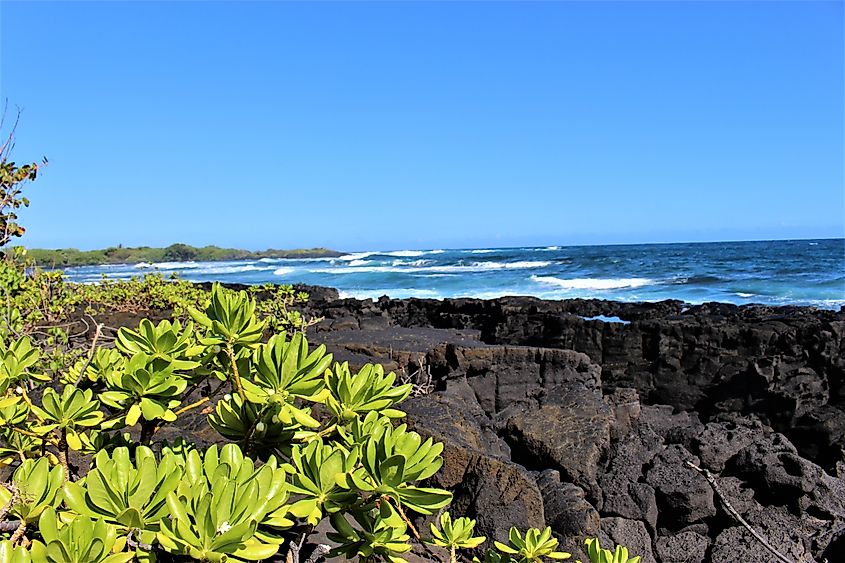
The Kaʻū district around Nā‘ālehu and Pāhala is the southernmost inhabited corner of the island and offers a slower tempo and a sense of deep local history. Highlights include the Āhihi-Kīnaʻu-like coastlines and rural drives through pasture and former plantation landscapes, plus visits to the Kaʻū Coffee Mill tasting rooms and seasonal farmers' markets. Plus, pay a visit to Punaluu Bake Shop to sample their famous Hawaiian sweet bread that’s baked according to a secret, generations-old recipe. Cultural programming frequently centers on hula, crafts, and storytelling that preserve local traditions.
Seniors benefit from county-run programs that support dining and community activities, and the regional hospital at Kaʻu Hospital in Pāhala provides emergency and inpatient care for the Kaʻū district. The area suits retirees looking for reasonable home prices (median house price is $425,000) who seek a tight-knit community with options for volunteering, attending local events, and enjoying slow coastal drives in places where the horizon stretches wide and the night skies are dark and clear.
Kaunakakai, Molokaʻi
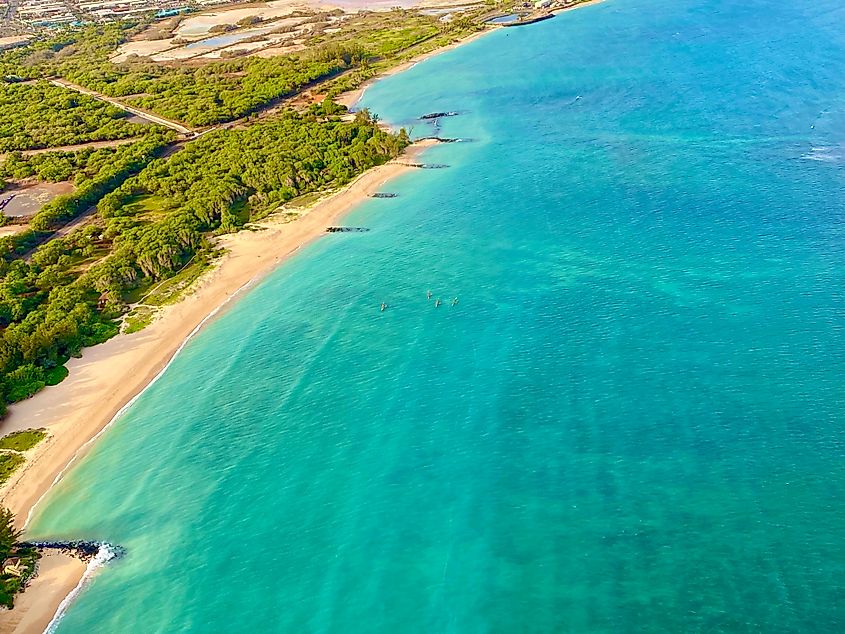
Kaunakakai is Molokaʻi’s main town, and it preserves a small-island rhythm that many retirees find restorative. With a median house price sitting at $299,000, the town’s compact harbor and the long Kaunakakai Pier make for pleasant morning walks and birdwatching, while historical buildings and small spots like Friendly Market give the downtown area its reputation for a friendly, community-minded pulse. For outdoor outings, pay a visit to the Kapuāiwa Coconut Grove to get a look at the palm trees in one of the last royal coconut groves. Nearby visitors will find “Church Row,” where seven missionary-style churches populate the area and date back to the 19th century.
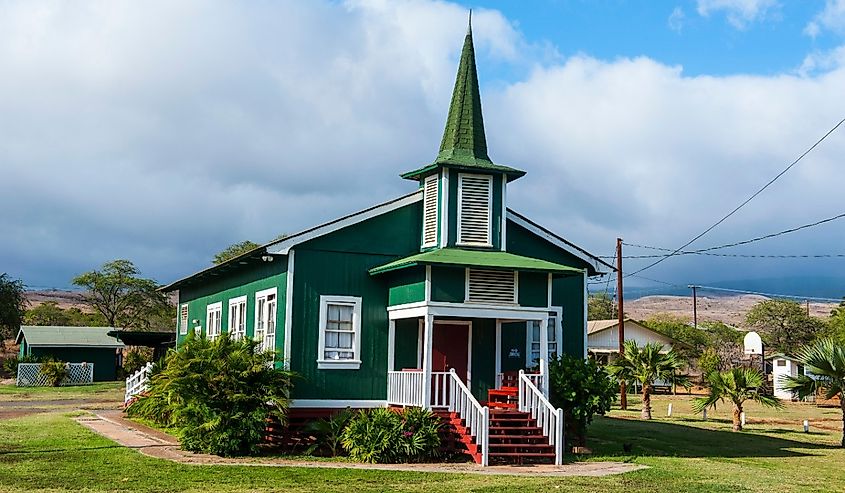
Health services are anchored by Molokaʻi General Hospital, and senior programming and services are coordinated through Kaunoa Senior Services and Molokaʻi’s community centers, which offer congregate meals, transportation, and classes. Retirees who value a quiet pace, abundant shoreline access, and strong neighbor networks will find Kaunakakai an accessible way to live on an island where daily life moves at a human scale.
Waiʻanae, Oʻahu
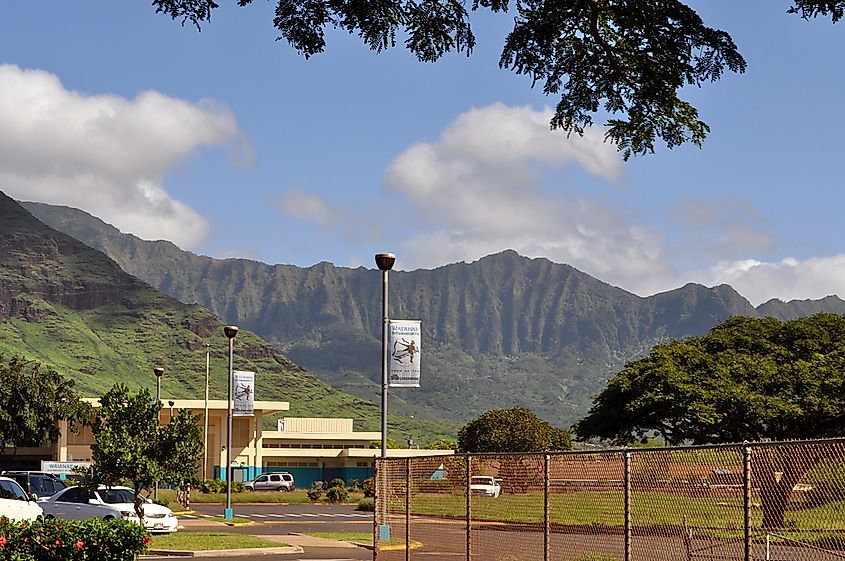
On Oʻahu’s leeward shore, Waiʻanae provides ocean access, community services, and an island lifestyle without Honolulu’s hefty price tag (median house prices are $490,000). The Makaha and Waiʻanae beaches offer long sand stretches for easy morning walks, while spots like Makeke Farmers’ & Greens Market highlight West Oʻahu’s plentiful local produce and a tight-knit community experience. The Waiʻanae area also supports beachside community events and outdoor exercise groups, and the Waiʻanae Coast Comprehensive Health Center supplies robust primary care and urgent services for the region.
Senior programming is active within the neighborhood community centers and seniors-focused nonprofit groups, like Waiʻanae Golden Age, that run fitness, arts, and social programs for older residents. For retirees who want to remain close to Oʻahu’s larger job and cultural centers while living on the coast, Waiʻanae combines beach access, community care resources, and transportation corridors that keep both the city and country within reach.
Līhuʻe, Kauaʻi

Līhuʻe acts as Kauaʻi’s administrative and commercial heart while offering easy access to the island’s natural attractions and community services, a combination that appeals to retirees seeking convenience with island character. The median home price in Līhuʻe is about $589,000, reflecting Kauaʻi’s balance of convenience and island character. Start with a morning visit to the Kauaʻi Museum to learn about island history and culture, then take a short drive to Wailua Falls for a brief, scenic viewpoint and photos. The harbor and shoreline areas, including walks near Līhuʻe Harbor, provide opportunities for birdwatching and gentle, low-impact exercise.
The Lihue Farmers Market and other weekly events around the downtown area invite easy socializing, and arts programming at local galleries keeps the calendar lively without drawing resort crowds. For health care, Wilcox Medical Center provides a full suite of services on the island, and neighborhood clinics and pharmacies support daily needs. Older residents will find organized activities through the county’s senior programs, and the Līhuʻe Senior Center and the Kauaʻi Adult Day Health Center offer congregate meals, classes, and daytime support that help newcomers build routines and friendships. Līhuʻe suits retirees who want neighbors, services, and quick access to Kauaʻi’s beaches and trails without sacrificing practical medical and social resources.
Choosing Your Island Lifestyle
From rainforest walks near the Hilo Farmers Market and crater overlooks at Hawaiʻi Volcanoes National Park to quiet mornings on the Kaunakakai Pier and shoreline strolls at Makaha and Waiʻanae beaches, these eight communities offer a range of island settings and daily rhythms retirees can adopt. Each town combines accessible outdoor experiences, such as viewing Wailua Falls or visiting the Lava Tree State Monument, with practical supports for older residents, including senior centers like Kamana Senior Center and medical access at Wilcox Medical Center. Whether one prefers coastal mornings, forested afternoons, or a small-island harbor routine, Hawaiʻi’s smaller communities show that retirement here can balance natural surroundings, community services, social activities, and opportunities for learning or quiet hobbies.
